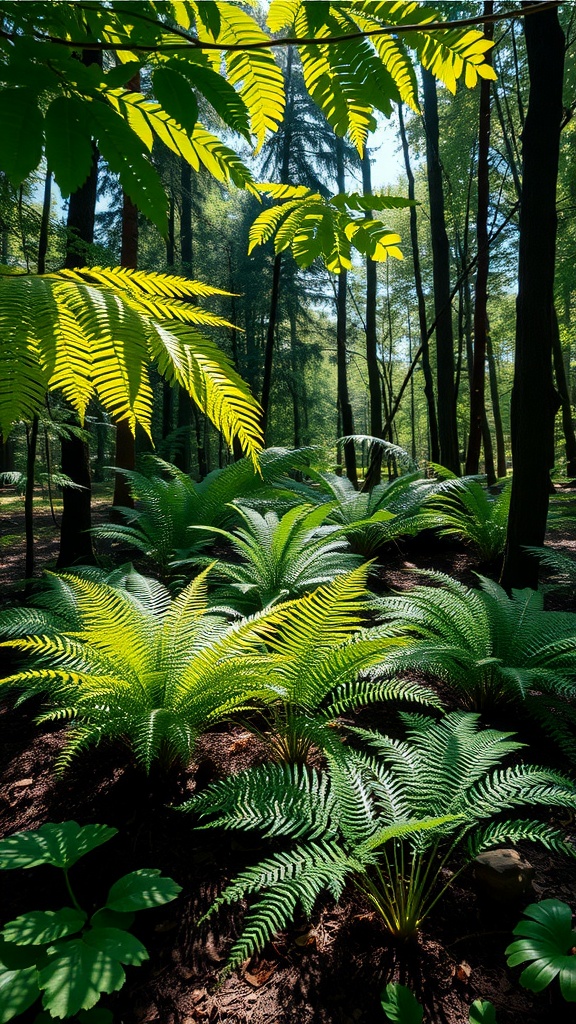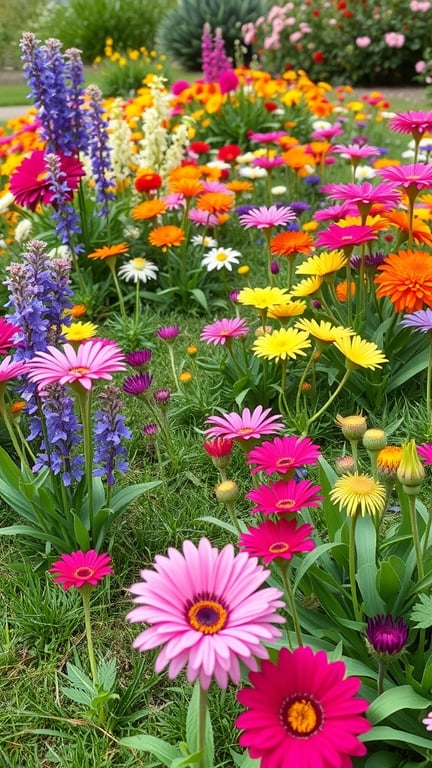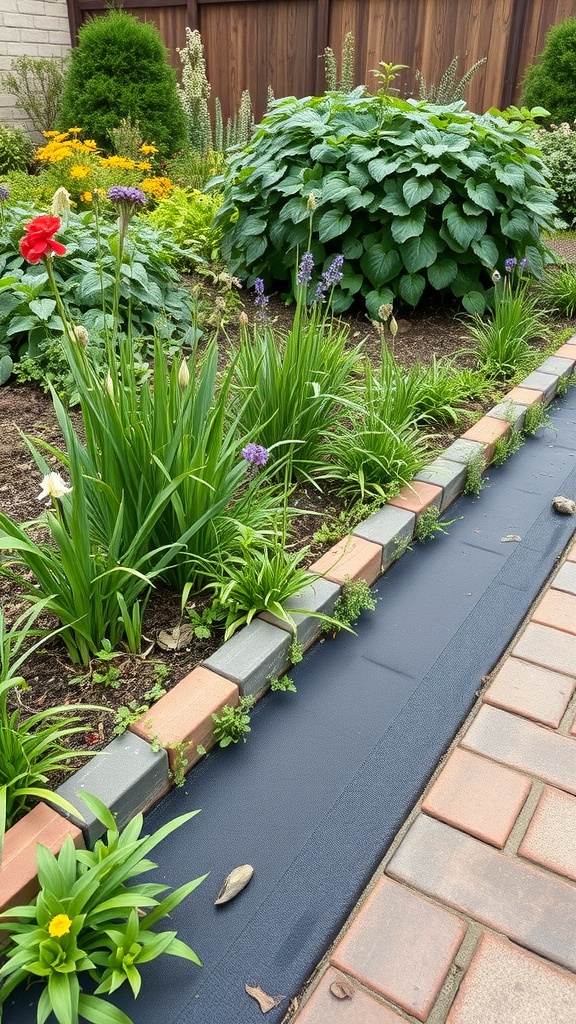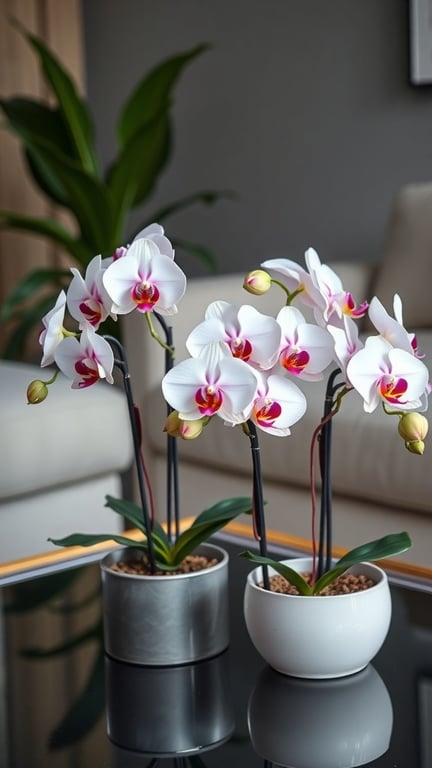19 Fascinating Facts About Milkweed Plants You Need to Know
The milkweed plant is a fascinating perennial found in many regions, particularly known for its beautiful clusters of pink and orange flowers. Not only does it add a pop of color to gardens, but it’s also crucial for the monarch butterfly, providing a habitat and food source for their caterpillars. This robust plant thrives in sunny spots and can be a lovely addition to any landscape, attracting pollinators and nature lovers alike!
Milkweed’s Adaptation to Different Climates
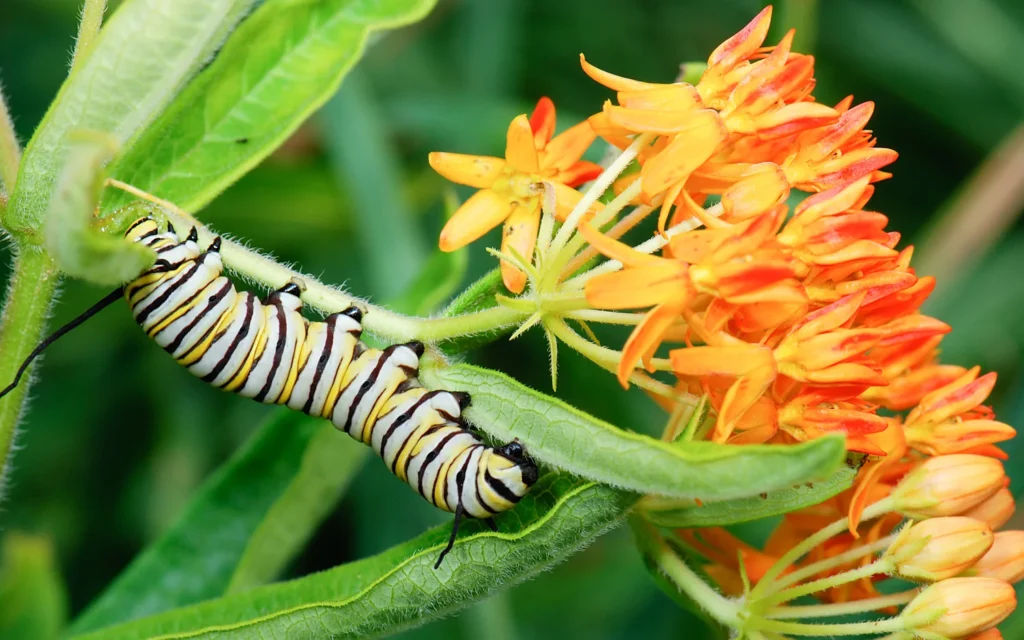
Milkweed is a fascinating plant that thrives in various climates. The image shows a map highlighting its distribution across different regions. The green areas indicate where milkweed is abundant, while the red spots show areas where it may struggle to grow.
This adaptability is key for milkweed’s survival. In warmer climates, it can grow tall and lush, providing essential habitats for monarch butterflies. In cooler areas, it may be shorter but still plays a vital role in the ecosystem.
Understanding where milkweed grows helps us appreciate its importance. It’s not just a pretty plant; it supports wildlife and helps maintain biodiversity. By recognizing its range, we can better protect these vital habitats.
The Importance of Milkweed for Pollinators

Milkweed plays a vital role in supporting pollinators, especially monarch butterflies. The image shows vibrant milkweed flowers buzzing with life. Monarchs are often seen fluttering around these blooms, drawn in by their sweet nectar.
Bees also love milkweed. They gather pollen from the flowers, which helps them thrive. This relationship benefits both the bees and the plants, creating a healthy ecosystem. When you plant milkweed, you’re not just beautifying your garden; you’re providing a food source for these important creatures.
Milkweed is essential for the lifecycle of monarchs. Female monarchs lay their eggs on these plants, ensuring that the next generation has a safe place to grow. Without milkweed, the monarch population would struggle to survive.
In summary, planting milkweed is a simple way to help pollinators. It creates a welcoming habitat for butterflies and bees, contributing to a balanced environment. So, if you have space in your garden, consider adding some milkweed!
Understanding Milkweed’s Role in Ecosystems
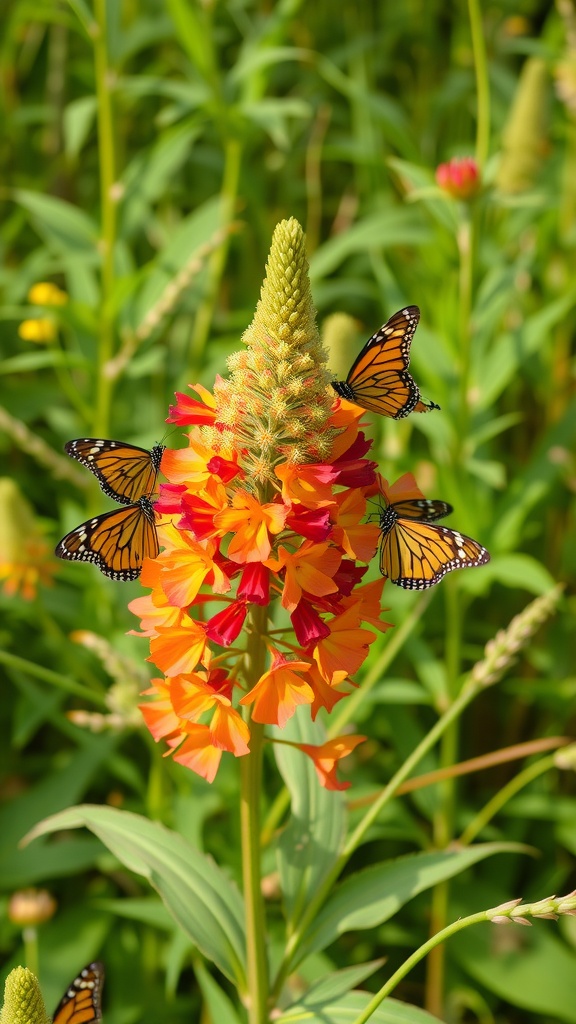
Milkweed plants play a key role in supporting various ecosystems. They are not just pretty flowers; they provide essential resources for many species. The vibrant orange and red blooms attract pollinators, especially butterflies like the monarch. This relationship is vital for both the plants and the butterflies.
In the image, you can see several monarch butterflies enjoying the nectar from the milkweed flowers. This interaction helps with pollination, which is crucial for the reproduction of the plant. Without milkweed, monarchs would struggle to survive, as their caterpillars rely on it as their primary food source.
Milkweed also offers shelter and habitat for other insects and wildlife. Its presence can enhance biodiversity in an area, making it a valuable addition to gardens and natural landscapes. By planting milkweed, you contribute to the health of local ecosystems and support the creatures that depend on it.
Milkweed Varieties and Their Unique Characteristics

Milkweed plants are fascinating and come in various types, each with its own charm. The image shows a vibrant collection of milkweed flowers, showcasing their unique colors and shapes. These plants are not just pretty; they play a vital role in the ecosystem, especially for monarch butterflies.
One popular variety is the Common Milkweed, known for its large, round clusters of pink flowers. This type is often found in fields and along roadsides. Another variety, the Swamp Milkweed, thrives in wetter areas and has slender, tall stems with clusters of purple flowers. Each type attracts different pollinators, making them essential for biodiversity.
Then there’s the Butterfly Weed, which stands out with its bright orange flowers. This variety is particularly loved by butterflies and is often used in gardens to attract these beautiful insects. No matter the type, milkweed plants are a delightful addition to any garden, offering beauty and supporting wildlife.
Milkweed as a Host Plant for Monarch Butterflies
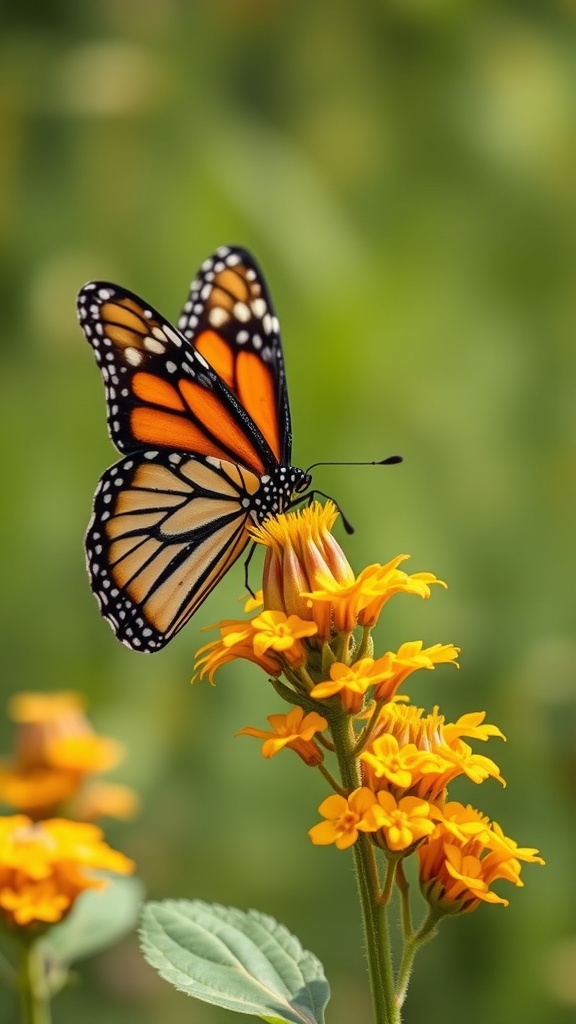
Milkweed is not just a pretty plant; it plays a key role in the life cycle of monarch butterflies. These butterflies rely on milkweed for laying their eggs and feeding their caterpillars. The vibrant orange and black monarch, often seen fluttering around these flowers, is a sight to behold.
In the image, a monarch butterfly is perched on a cluster of bright yellow milkweed flowers. This scene captures the special bond between the butterfly and the plant. The flowers provide nectar, which is essential for adult butterflies, while the leaves serve as a food source for the caterpillars.
Milkweed plants come in various species, each offering unique benefits. They thrive in sunny areas and can be found in gardens, fields, and along roadsides. By planting milkweed, you can create a welcoming habitat for these beautiful creatures.
Supporting monarch butterflies is vital, as their populations have been declining. By planting milkweed, you contribute to their survival and enjoy the beauty they bring to your garden. So, if you see a monarch fluttering by, you might just have milkweed to thank!
The Life Cycle of the Milkweed Plant
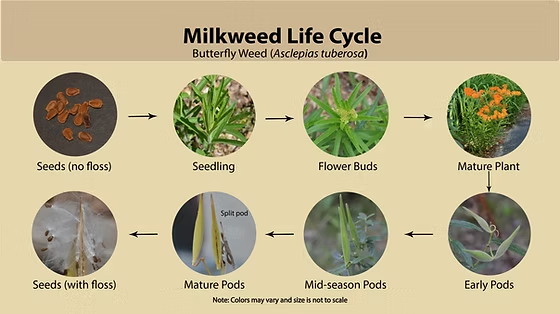
The milkweed plant has a fascinating life cycle that showcases its resilience and beauty. It starts as a seed, which needs the right conditions to germinate. Once planted, the seeds sprout and begin their journey. The image shows young milkweed plants with vibrant green leaves and budding flowers, indicating they are in the early growth stage.
As the plants mature, they develop tall stems and produce clusters of flowers. These flowers are not just pretty; they attract various pollinators, especially monarch butterflies. The relationship between milkweed and these butterflies is special, as the plant serves as a host for their larvae.
After flowering, the milkweed produces pods filled with seeds. When these pods burst open, they release fluffy seeds that can be carried by the wind to new locations. This natural dispersal method helps the milkweed spread and thrive in different environments.
Throughout its life cycle, the milkweed plant plays a crucial role in its ecosystem. It provides food and habitat for many creatures, making it a vital part of the landscape.
Cultivating Milkweed in Your Garden

Milkweed is a fantastic addition to any garden. It’s not just pretty; it plays a vital role in supporting local wildlife, especially monarch butterflies. These plants have broad green leaves and tall flower spikes that can really brighten up your space.
In the image, you can see a gardener tending to a lush patch of milkweed. The tall flower spikes are starting to bloom, showcasing their unique structure. This gardener is likely ensuring the plants get enough water and care, which is essential for their growth.
When cultivating milkweed, choose a sunny spot in your garden. They thrive in well-drained soil and can tolerate drought once established. Regular watering helps them grow strong and healthy. Plus, they attract pollinators, making your garden a lively place.
Don’t forget to check for pests! While milkweed is generally hardy, keeping an eye out for aphids can help maintain the health of your plants. With a little love and attention, your milkweed will flourish and contribute to a vibrant ecosystem.
Milkweed’s Medicinal Properties and Uses
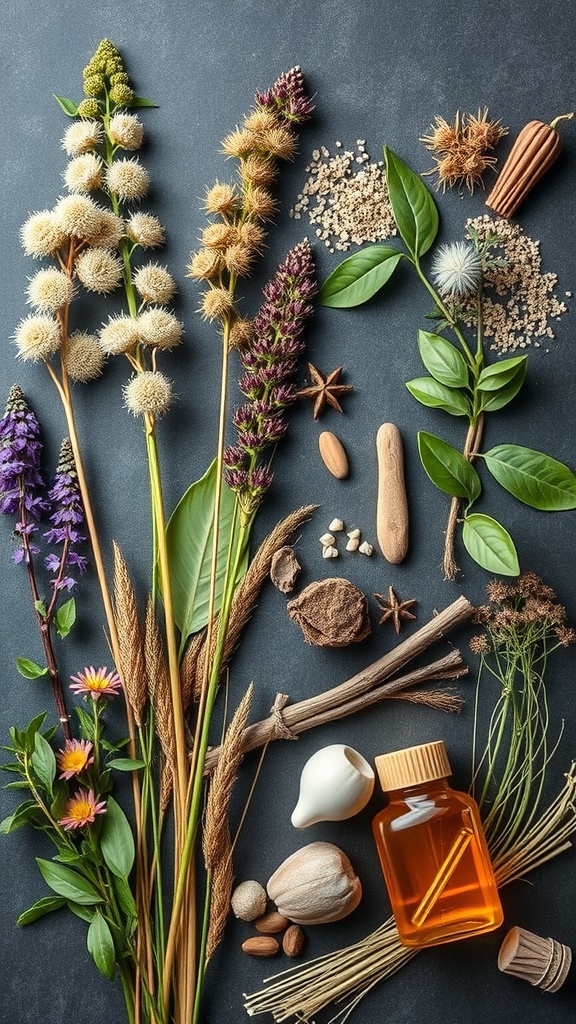
Milkweed is not just a pretty plant; it has a rich history of medicinal uses. The image shows various herbs and natural ingredients, highlighting the beauty and diversity of nature’s pharmacy. Milkweed, in particular, has been used for centuries in traditional medicine.
This plant is known for its anti-inflammatory properties. People have used it to help with respiratory issues, like coughs and asthma. The milky sap contains compounds that can soothe irritation and promote healing.
In addition to respiratory benefits, milkweed has been used to treat skin conditions. Its natural compounds can help with wounds and rashes. Some even make poultices from the leaves to apply directly to the skin.
Another interesting use of milkweed is in herbal teas. The leaves and flowers can be steeped to create a soothing drink. This tea is often enjoyed for its calming effects, making it a great choice for relaxation.
Always remember to consult with a healthcare professional before using milkweed or any herbal remedy. While it has many benefits, it’s essential to ensure it’s safe for you.
Threats to Milkweed Populations
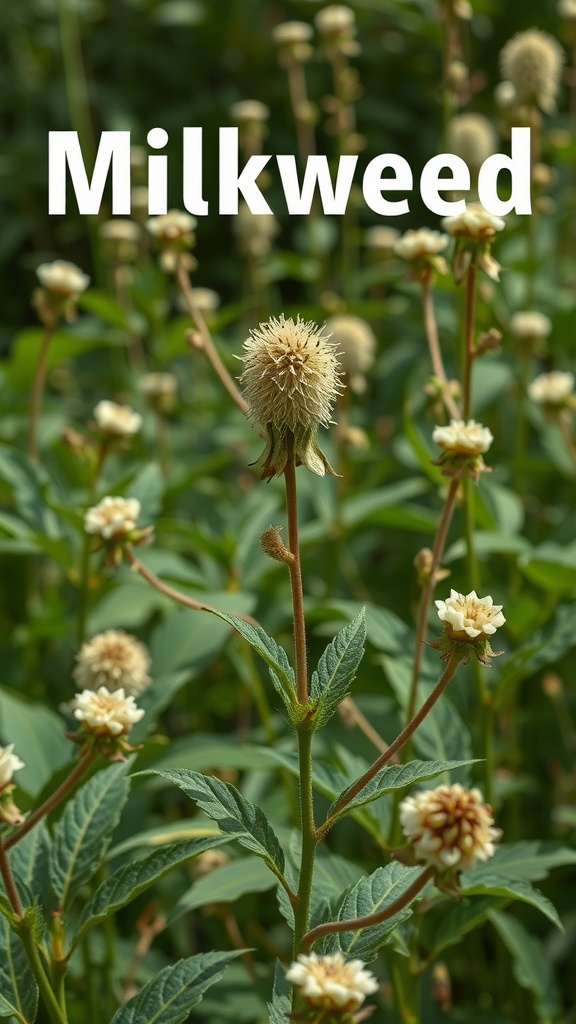
Milkweed is a beautiful plant that plays a key role in our ecosystem, especially for monarch butterflies. Unfortunately, it faces several threats that put its survival at risk.
Habitat loss is a major concern. Urban development and agricultural expansion often lead to the destruction of milkweed habitats. This means fewer places for milkweed to grow and thrive.
Pesticides are another big issue. Many farmers use chemicals to protect crops, but these can harm milkweed plants and the creatures that rely on them. When milkweed is affected, so are the butterflies and other pollinators that depend on it.
Climate change also poses a threat. Changes in temperature and weather patterns can disrupt the growth cycles of milkweed. This can lead to fewer plants and less food for the butterflies.
Lastly, invasive species can outcompete milkweed for resources. When non-native plants take over, they can choke out the milkweed, making it harder for it to survive.
Milkweed in Traditional Cultures

Milkweed has played a significant role in various traditional cultures. This plant is not just a pretty flower; it has been used for many practical purposes. In some Native American tribes, milkweed fibers were used to make ropes and textiles. The strong fibers are perfect for weaving, showcasing the plant’s versatility.
The image shows a collection of handmade items, likely crafted from natural materials, including milkweed. You can see woven baskets and tools that highlight the resourcefulness of traditional artisans. These items reflect a deep connection to nature and the importance of using local resources.
In addition to practical uses, milkweed also holds cultural significance. It is often associated with stories and traditions passed down through generations. The plant’s role in ecosystems, particularly as a host for monarch butterflies, adds to its value in many cultures.
Milkweed Seed Propagation Techniques
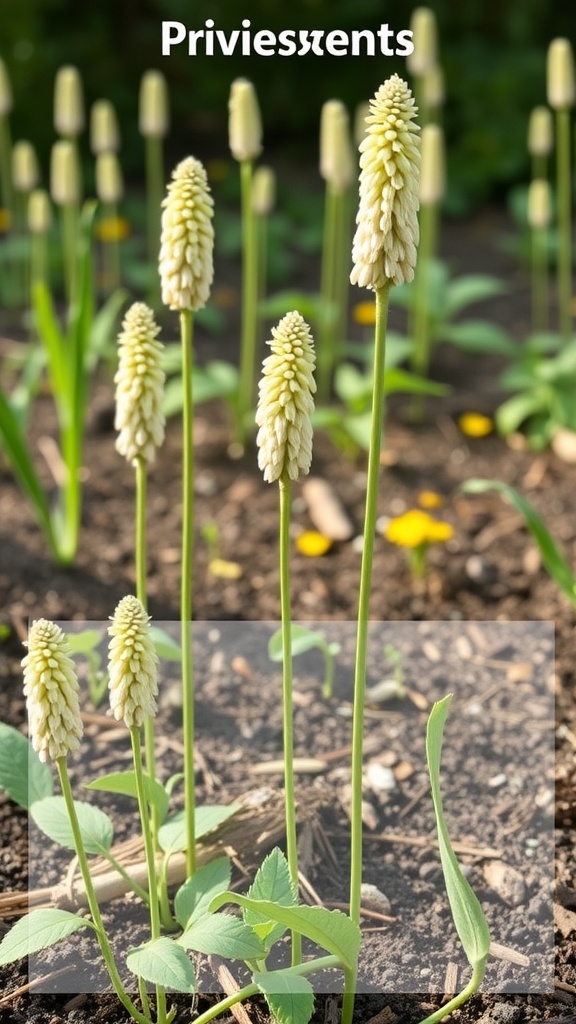
Milkweed plants are not just beautiful; they play a vital role in supporting wildlife, especially monarch butterflies. When it comes to propagating these lovely plants, there are a few techniques that can help you grow them successfully.
One effective method is seed propagation. Milkweed seeds need a period of cold stratification to germinate well. You can achieve this by placing the seeds in a moist paper towel inside a plastic bag and storing them in the refrigerator for about 30 days. This mimics winter conditions and prepares the seeds for sprouting.
Once the cold treatment is complete, you can plant the seeds in well-draining soil. Make sure to space them out to give each plant room to grow. Water them gently, and keep the soil moist but not soggy. With a little patience, you’ll see those seedlings pop up!
Another option is to use cuttings from existing milkweed plants. Choose healthy stems and cut them just below a node. Place the cuttings in water or directly into soil, and they should root within a few weeks. This method is quick and can help you expand your milkweed garden in no time.
Exploring the Future of Milkweed Conservation
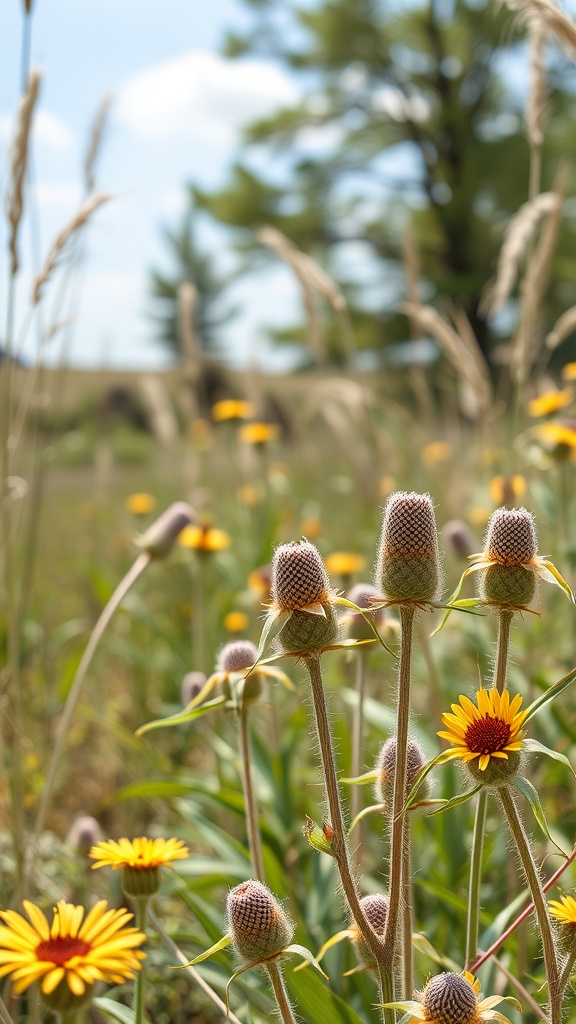
The milkweed plant is not just a pretty flower; it plays a vital role in our ecosystem. This image captures the beauty of milkweed in its natural habitat, surrounded by vibrant yellow flowers and tall grasses. The soft, fuzzy pods of the milkweed are essential for the lifecycle of monarch butterflies, which rely on these plants for food and shelter.
Conservation efforts are becoming increasingly important as milkweed populations face threats from habitat loss and pesticide use. Protecting these plants can help ensure that monarchs continue to thrive. Community initiatives, like planting milkweed in gardens and public spaces, are gaining traction. These efforts not only support butterflies but also promote biodiversity.
Looking ahead, education is key. Teaching people about the importance of milkweed can inspire more individuals to get involved in conservation. Whether it’s through school programs or local workshops, spreading awareness can make a big difference. Every little action counts in the fight to protect these essential plants and the wildlife that depends on them.
The Aesthetic Appeal of Milkweed in Landscaping

Milkweed plants bring a unique charm to any garden. Their tall, slender stems and vibrant flowers create a striking visual impact. The soft pink and orange hues of the blooms stand out beautifully against the lush green foliage. This combination not only adds color but also texture to the landscape.
One of the most delightful aspects of milkweed is its ability to attract butterflies. Monarch butterflies are particularly drawn to these plants, making them a lively addition to your garden. Watching these graceful creatures flutter around the flowers can bring joy and a sense of connection to nature.
Incorporating milkweed into your landscaping can also promote biodiversity. These plants serve as a host for caterpillars and provide nectar for various pollinators. This makes your garden not just beautiful but also beneficial for the environment.
Whether used in a flower bed or as part of a wildflower garden, milkweed can enhance the overall aesthetic. Its natural beauty and ecological importance make it a wonderful choice for anyone looking to create a vibrant and inviting outdoor space.
Creating a Milkweed Habitat in Your Backyard
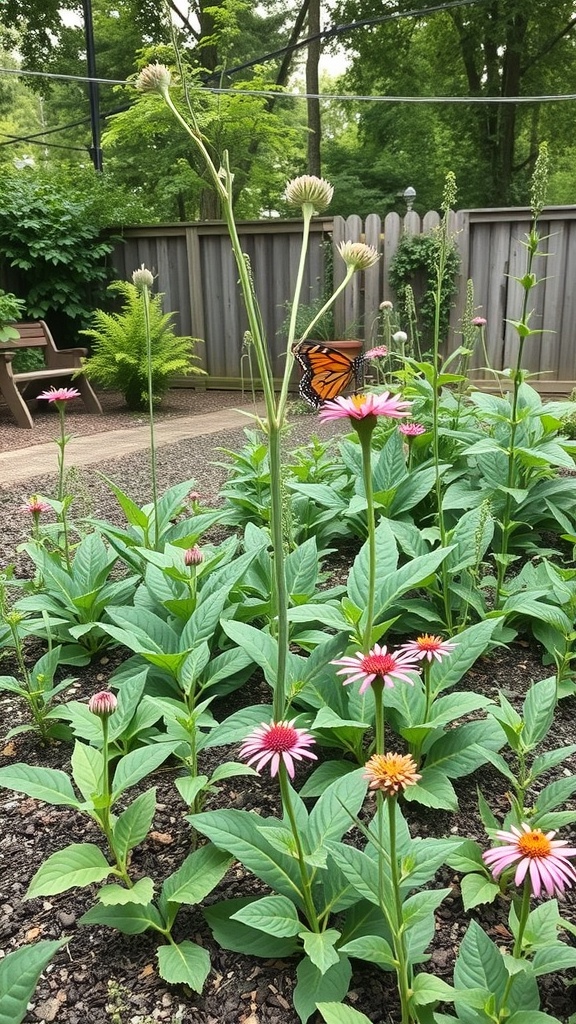
Creating a milkweed habitat is a fantastic way to support local wildlife, especially monarch butterflies. In the image, you can see a vibrant garden filled with milkweed plants and colorful flowers. These plants are essential for the life cycle of monarchs, providing both food and a place for them to lay eggs.
To start, choose a sunny spot in your yard. Milkweed thrives in full sunlight, so look for an area that gets at least six hours of sun each day. Prepare the soil by removing weeds and adding compost to enrich it. Plant your milkweed seeds or young plants, spacing them out to allow for growth.
Water your plants regularly, especially during dry spells. Once established, milkweed is quite resilient. You’ll notice butterflies fluttering around, and that’s a sign your habitat is working! Adding other native plants can attract even more pollinators, creating a lively ecosystem.
Don’t forget to enjoy your garden! Spend time observing the butterflies and other creatures that visit. It’s a rewarding experience to see your efforts contribute to nature.
Understanding Milkweed’s Toxicity and Safety

Milkweed is a fascinating plant, known for its unique beauty and ecological importance. However, it also comes with a warning. The plant contains toxic compounds that can be harmful if ingested. This toxicity is a defense mechanism, protecting it from herbivores.
The image shows milkweed flowers standing tall, surrounded by lush green leaves. While they may look inviting, it’s essential to remember that the sap can cause skin irritation. Always handle milkweed with care, especially if you have sensitive skin.
For those interested in gardening or nature, understanding how to safely interact with milkweed is key. If you plan to grow it, ensure you wear gloves when handling the plant. This simple step can help avoid any unpleasant reactions.
In summary, while milkweed is a beautiful addition to any garden, respect its toxicity. Enjoy its beauty from a safe distance, and always prioritize safety when handling this remarkable plant.
